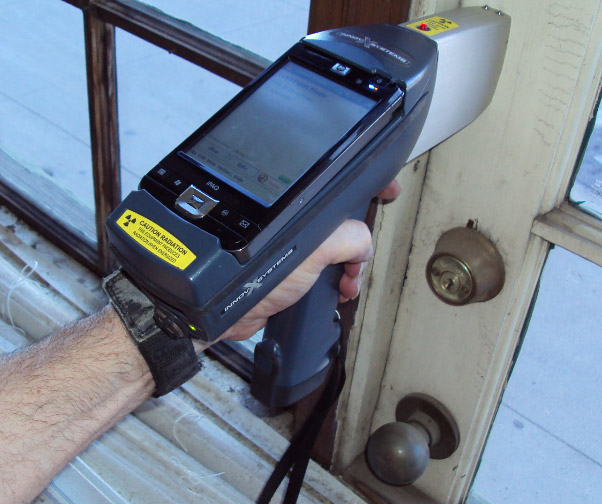Comprehensive Overview on Effective Lead Violation Elimination Methods
In the realm of ecological safety, addressing lead infractions demands a careful and structured method. This comprehensive guide begins by highlighting the crucial preliminary steps of determining lead dangers with innovative evaluation and testing techniques. The overview clarifies on the value of sticking to stringent safety protocols during the elimination process, including the usage of proper PPE and isolating impacted locations.
Determining Lead Hazards
Recognizing lead threats is a vital primary step in minimizing the threats related to lead direct exposure. Lead, a toxic metal, can be present in different environmental mediums, consisting of paint, soil, water, and dust. It postures serious health threats, specifically to kids and expectant ladies, bring about neurological damage and developmental delays. For that reason, accurate recognition of possible lead resources is essential for reliable removal.
The first stage in recognizing lead hazards entails understanding usual lead resources within the built setting. Frameworks constructed before 1978 are particularly vulnerable due to the prevalent use of lead-based paint during that period. Furthermore, soil contamination can take place from weakening outside paint, commercial discharges, or historic use leaded fuel.
One more substantial source is lead piping and pipes components, which can seep lead right into drinking water. Durable goods such as toys, ceramics, and imported products may also consist of unsafe lead levels. Notably, work-related environments and pastimes including lead can track pollutants right into homes.
Analysis and Screening
When addressing lead risks, reliable analysis and testing are vital. This crucial step makes sure the identification and quantification of lead visibility, thereby leading succeeding removal efforts. Preliminary assessment generally entails a visual assessment to recognize potential lead sources, such as wearing away paint or infected dust. This is enhanced by even more extensive screening approaches to identify the degree of contamination.

Dirt wipe tasting is an additional critical method, especially in domestic settings. By gathering examples from floorings, windowsills, and various other surfaces, this technique supplies understandings into prospective direct exposure threats. Dirt testing around structure boundaries is important to identify lead contamination that might position threats, specifically to children.
Safe Elimination Procedures
Upon finishing thorough analysis and testing, applying safe elimination treatments is the next essential phase in addressing lead dangers. This process makes certain that lead-contaminated materials are effectively and securely eliminated, minimizing danger to both workers and locals. you can try these out The first step entails separating the affected location utilizing plastic sheet and proper securing strategies to avoid the spread of lead dirt.
Employees have to put on suitable personal safety devices (PPE), including respirators, gloves, and non reusable coveralls, to reduce direct exposure. Using specialized tools and damp techniques, such as damp fining sand or utilizing HEPA-filtered vacuums, reduces the diffusion of lead bits. It is critical to avoid completely dry sanding or abrasive blowing up, as these approaches can create unsafe lead dirt.
Garbage disposal is an additional essential component; all contaminated products must be firmly bagged and labeled according to EPA and regional guidelines. Additionally, thorough cleansing of the workplace with HEPA vacuum cleaners and damp wiping guarantees the elimination of recurring lead particles.
Post-Removal Confirmation

Verification of successful lead removal, referred to as post-removal confirmation, is imperative to ensure the security and habitability of the remediated location. This procedure involves a collection of precise assessments and tests created to spot any kind of recurring lead particles that might position health dangers. The first action normally includes an aesthetic evaluation to analyze the completion and high quality of the remediation work. This assessment guarantees that all well-known resources of lead have been attended to which no noticeable indications of contamination remain.
Complying with the visual examination, ecological sampling is carried out. This involves gathering dust, dirt, and sometimes water samples from the remediated area. Certified research laboratories analyze these samples to determine lead levels, guaranteeing they fall listed below the security thresholds developed by regulatory bodies such as the Environmental Protection Firm (EPA)
Additionally, air quality screening might be carried out to discover airborne lead particles, particularly in situations where considerable lead-based paint elimination or improvement has actually taken place. The results of these tests give quantitative information verifying that the lead degrees are within permissible limits.
Eventually, post-removal verification works as an important checkpoint, validating the efficiency of the lead reduction initiatives and safeguarding the health of occupants and visitors.
Safety Nets and Maintenance

A key click resources safety net includes using lead-safe certified specialists for any kind of restoration, repair work, or painting activities. These experts are learnt methods that lessen lead dust and particles. In addition, maintaining painted surfaces to avoid cracking or peeling is crucial, as weakening paint can release lead particles into the environment.
Educational efforts targeting property owners and renters regarding the dangers of lead and the significance of reporting any possible dangers can better improve preventive initiatives. Routine cleaning utilizing HEPA vacuums and wet mopping strategies can substantially minimize lead dirt buildup.
Final Thought
In recap, effective lead offense elimination necessitates a careful strategy including comprehensive assessment, exact testing, and strict elimination procedures. Guaranteeing safety and security with appropriate isolation and personal safety equipment stays extremely important. Post-removal verification using environmental tasting and air top quality screening corroborates compliance with established security criteria. Moreover, recurring assessments and upkeep are necessary to minimize future lead risks, consequently guarding public health and wellness and making sure sustained conformity with regulatory requirements.